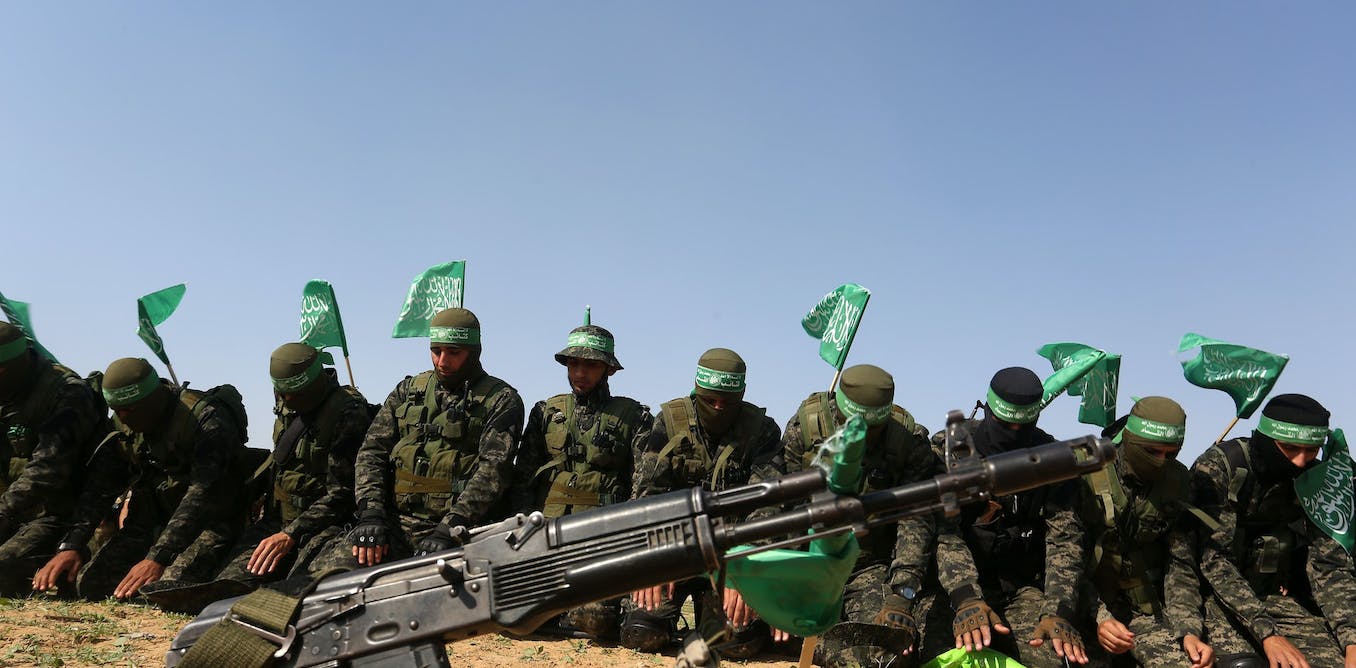The Israeli-Palestinian conflict is one of the longest and most violent ongoing modern conflicts. It involves multiple causes, and includes various actors, one of which is Hamas, perpetrators of the brutal attack on Israel that has initiated the war in Gaza.
But who are they? Here we will outline the history of Hamas, and answer seven key questions about this organisation’s ideology, goals, and approach to achieving them.
1. When was Hamas founded?
As an organisation, Hamas was conceived primarily by the religious leader Ahmed Yassin and was founded in 1987 in the midst of the escalating Israeli-Palestinian conflict. It emerged in opposition to the Palestine Liberation Organization, the socialist and nationalist group led by Yasser Arafat, which had hitherto been the legitimate authority among Palestinians. Hamas’ founders saw the PLO as failing to appropriately defend the interests of the Palestinian people, and that it was giving in to what they considered to be Israel’s strategy of occupying Palestinian territory.
2. What is Hamas’ ideology?
Hamas’ ideology combines nationalism and the political Islamism of the Muslism Brotherhood in Egypt. In terms of religion they are Salafist, meaning they adhere to a strict interpretation of Islam. This is why they seek a Palestinian state governed by Islamic Sharia law.
3. What are Hamas’ aims?
What Hamas plainly seeks is the establishment of a Palestinian state. Where there is doubt is over the territory in which it envisages the establishment of the state, since it initially called for a Palestinian state occupying the West Bank, Gaza and the space now occupied by the state of Israel. In fact, they violently opposed the 1993 Oslo peace accords between the Palestine National Liberation Organisation and the State of Israel. Accordingly, they initially refused to form part of the Palestinian National Authority, which was beginning to gain international –though not unanimous– recognition as the legitimate Palestinian authority and the blueprint for the future Palestinian state.
4. Does Hamas recognise Israel?
Although public statements by Hamas leaders vary, its denial of the legitimacy of the state of Israel has been a constant point of friction in the region.
5. What are Hamas’ methods?
The approach taken by Hamas to achieve its political aims combines social mobilisation, political organisation and negotiation, and the use of violence. Hamas is therefore usually considered a jihadist group given that it does not rule out violence as a political strategy to further its aims.
Its modus operandi merits an additional clarification. Hamas is not an ordinary jihadist group, such as Al-Qaeda or the Islamic State, who almost exclusively champion armed struggle. Hamas, much like the Muslim Brotherhood in Egypt, is open to the possibility of resorting to violence as a strategy to accompany political bargaining. It can therefore stand for elections and sit down at negotiating tables, as well as plan and carry out terrorist actions against civilians and the military, such as those launched last weekend.
6. Are they a terrorist group?
Simply labelling Hamas as a terrorist group is somewhat problematic. Although the international community, represented by international bodies, has made efforts to objectify and develop a rigorous taxonomy of terrorism, such a classification still has room for ambiguity.
The UN, along with the European Union, the USA, Canada, Japan, Australia, Paraguay, the Organizaion of American States and Egypt currently list Hamas as a terrorist organisation. However, other countries, including Switzerland, Norway, Russia, Brazil, Turkey and China, do not.
This anomaly in terms of recognition is better explained if we take the previous point into account: The Muslim Brotherhood in Egypt, which is currently banned, has also at different times and in the eyes of different actors been considered a legal, legitimate political movement.
7. Is Hamas a political movement?
Hamas rightly considers itself a political movement. Indeed, it has appealed to the European Court of Justice to be removed from the EU’s list of terrorist groups, on which it was placed in 2001. In 2014, the Court provisionally urged the EU to remove Hamas from the list, although it was finally decided in 2019 that it should remain on the list, meaning it could therefore continue to have its assets frozen.
In Palestine, Hamas has also operated as a political party. This situation culminated in 2006, when they ran in the Palestinian elections against the other, more secular, major party, Al-Fatah, and won by an absolute majority. The international community, however, did not recognise the election results and another major internal crisis ensued, which has not yet been fully resolved and has left Al-Fatah ruling in the West Bank and Hamas, de facto, in Gaza.
Although in 2017 Hamas again accepted the Palestinian National Authority as the governing body in Gaza, their influence over the region, where more than two million people are crowded together, remains decisive.
Conclusion
Control of Palestinian territory by the Palestinian National Authority (the internationally recognised Palestinian government) is therefore fragmented in general. To this we can add that Hamas, de facto rulers of Gaza, have advocated the use of violence and have not recognised the State of Israel’s legitimacy (although in 2008 they did raise the possibility of a truce if Israel withdrew to the territory it occupied in 1967).
The combination of these two factors form the backbone of the argument that Israel uses to justify the hard line policy of confinement and blockade that this area has experienced for decades, a policy that has, this last week, intensified alarmingly and worryingly in retaliation for Hamas’ terrorist action.



